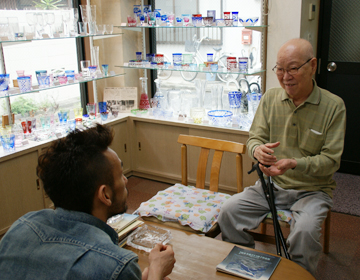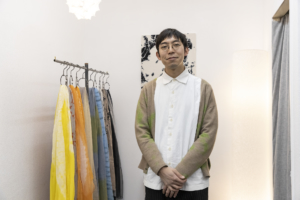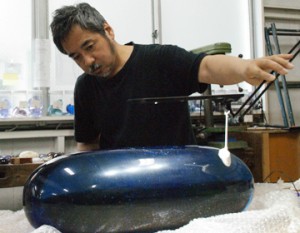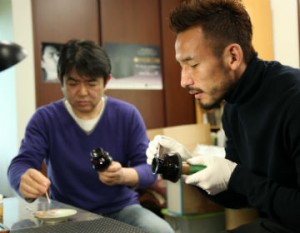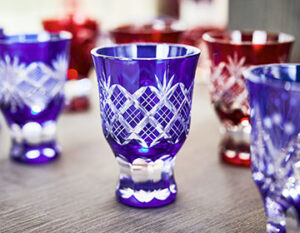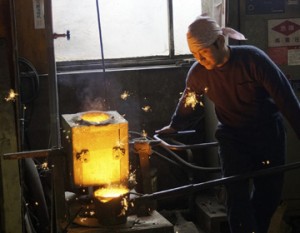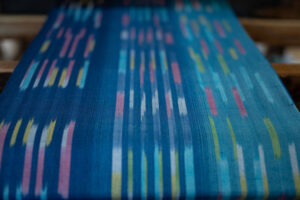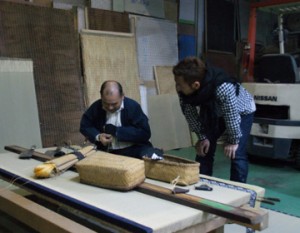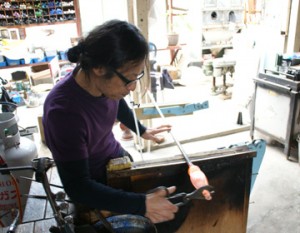Ceramics that play up the food

Fresh and bright. These are the attractive aspects of Edo Kiriko. Edo Kiriko is thought to be a combination of irokise glasses with different patterns engraved, but in fact Edo Kiriko uses only transparent glass. Irokise glasses have been in use only since the Meiji period.
”Recently, colored glass is more popular.” Edo Kiriko artisan Yukio Nemoto told us.
”But transparent glass makes the colors of the beverage and food stand out. Colored glass will obstruct the colors of the food. I don’t think it will look as tasty.” As an artisan, he told us that the standard is transparent glass.
The skill that comes only with experience
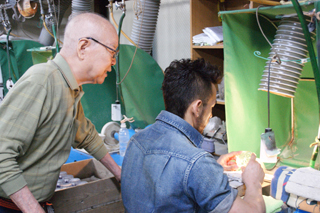
The delicate detailed patterns can only be made by a veteran artisan. However, Nakata gave it a try. Tatsuya Nemoto, the son, adjusted the machine for Nakata as he shaved the glass, which he struggled with.
”You think you carved deep enough only to find that it wasn’t enough. Then there are times when you end up carving deeper than intended.” In response to Nakata’s comments, ”This is skill learned through experience. Thin lines and thin glass are still difficult,” he told us.
When you take a look around the studio, there are many glassware. There are some that make you wonder if it’s really Edo Kiriko, they are so modern. Some of the pieces were made using the Graveur Glass method from Europe.
Avoiding becoming obsolete
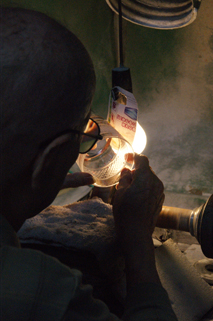
Edo Kiriko has a little over 10 types of patterns, including ”nanako”. ”But that’s not enough,” he commented.
If people see it as Kiriko from 50 years ago, that’s not good. It has to reflect the needs of the times, otherwise, the tradition will not be passed on.” Therefore he creates his own Kiriko designs and combines it with traditional patterns. The work will not evolve unless this is done.
Nemoto has been presenting his Edo Kiriko pieces as tea ceremony tools.
”People who practice ”sado” are very particular about their tools. So I frantically made my own,” he explained.
Tradition does not always exist in the same form. It goes through change, absorbing and reflecting the present. Challenges are important, making its presence known in a completely new field.



